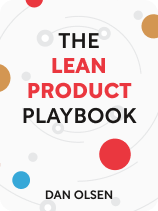

This article is an excerpt from the Shortform book guide to "The Lean Product Playbook" by Dan Olsen. Shortform has the world's best summaries and analyses of books you should be reading.
Like this article? Sign up for a free trial here.
Is your product truly meeting customer needs? How can you ensure it stands out in a competitive market?
According to Dan Olsen, product-market fit is paramount to your product’s success. His method focuses on understanding your target market, identifying high-value customer needs, and creating a compelling value proposition.
Keep reading to learn Olsen’s strategies for designing products that customers will love and buy.
Dan Olsen on Product-Market Fit
According to Dan Olsen, product-market fit determines whether a product succeeds or fails. When you have a product-market fit, your product satisfies customer needs better than existing products on the market.
(Shortform note: In Blue Ocean Strategy, W. Chan Kim and Renée Mauborgne advise that the best way to find product-market fit is to go further than merely improving upon your competitors: You should create a product for which there are no competitors by meeting customer needs that no other product currently addresses. By doing so, you’ll operate in a “blue ocean”—an uncontested market space that will allow for more success than a “red ocean” that’s “bloodied” by fierce competition. Thus, as you work to achieve product-market fit, aim to find ways to make your product so unique that competitors become irrelevant.)
We’ll discuss Olsen’s steps for designing a product with product-market fit by gaining a broad understanding of your target market’s needs and planning a product that can meet those needs.
Understand Your Target Market
The first step to creating a winning product is building a strong understanding of your target market and their needs. Olsen advises that you thoroughly understand your target customer—get a clear idea of who they are, what problems they experience, and their wants and desires. When you understand all dimensions of your target customer’s lifestyle and needs, you’ll be better able to create a product you know they’ll want to buy.
Olsen suggests you do two things to gather, organize, and make sense of information about your market: Identify your target customer, and focus on problems, not solutions.
Identify Your Target Customer
First, Olsen suggests you create hypotheses about who your target customer is by identifying all relevant characteristics that people in your target market share. Consider four characteristics:
- Demographics—like age and gender.
- Psychographics—like values, attitudes, and interests.
- Needs—for example, the need for fast and efficient meal preparation.
- Behaviors—for example, people who regularly purchase prepared or easy-to-cook food items.
Once you’ve identified your target customer’s attributes, create customer personas that represent your target customer. Personas are detailed, fictional representations of your target customer—including names, representative photographs, relevant quotes, job titles, and so on. They give everyone on your product development team the same understanding of who the customer is. Personas can also help you decide what features to include when designing your product.
Olsen points out that your customer personas are only hypotheses because you can’t predict with complete certainty who will be attracted to your product until it’s actually on the market, so the process of defining your target customer should be continuous and repetitive. As you interact with more potential customers, revise and refine your hypotheses and personas.
Focus on Problems, Not Solutions
Once you have a clear representation of who your target customer is, explore their problems—but Olsen advises that you don’t yet brainstorm solutions. He argues that, when you start thinking about the possible products, features, or services that can solve your customer’s needs, you narrow your vision and block yourself from generating more creative, less obvious solutions. You may also end up coming up with solutions that don’t resolve the true problems your customers have.
For example, if your target customers are young adults looking to eat healthier, don’t immediately fixate on creating healthy meal plans that are easier to follow. Instead, dig deeper into the complexities of why most young adults tend not to eat healthier. You might realize that a lack of fresh produce is an issue, which can give you an idea for a feature that directly connects local farmers with consumers.
Identify High-Value Customer Needs
Olsen writes that, after you’ve thoroughly researched your target market’s needs, you should decide which needs you want your product to address. We’ll discuss how to calculate the value of each customer need and create your value proposition—a description of the unique benefits your product will provide for customers.
Calculate the Value of Each Customer Need
Olsen recommends you calculate the value of each customer need by assessing two factors:
Factor 1: How important the need is to your target customer. Your product becomes more valuable when it solves a problem your customers care deeply about. The key is to cater to their major issues or concerns so your product isn’t just useful, but essential.
Factor 2: How well existing products on the market meet each need. You want your product to satisfy customers more than other products on the market, so focus on customer needs that are not already met by existing products. This way you won’t have to contend with heavy competition.
Olsen suggests you measure these two factors by finding and surveying your prospective customers. Gather grades or scores for each factor—for instance, have customers rank the importance of each need on a scale of one to five and satisfaction on a scale ranging from completely dissatisfied to completely satisfied. Then, plot the scores on a chart or graph and see which needs are most valuable to pursue. Olsen writes that the best opportunities are needs that users consider most important but are least satisfied by existing products on the market.
Create a Value Proposition Table
Once you’ve calculated the value of each customer need, Olsen advises you to create a table that will help you examine which needs your product will address and how you’ll address them better than your competitors. He calls this a value proposition table.
In the first column of your value proposition table, list the needs your product will address. He recommends that you focus on a limited range of needs: Choose your customers’ most important needs, and choose needs that complement each other. For example, if you’re designing a fitness tracker, add features that directly support health monitoring (like calorie counting and sleep tracking) instead of something like weather updates that are only tangentially related. Being selective about what needs your product addresses allows you to use your resources more efficiently, avoid distractions, and deliver the most value with the least amount of waste.
Olsen recommends grouping these needs into three categories:
- Essential needs—basic needs or requirements your product must satisfy to be acceptable. For example, a video editing software must be able to cut, splice, and rearrange footage or it would be useless to prospective users.
- Performance needs—expectations that increase customer satisfaction when better fulfilled and decrease satisfaction if not adequately fulfilled. For example, users would be more satisfied by high rendering speed and the ability to handle high-resolution footage.
- Bonus needs—extra features that customers don’t necessarily expect but would be excited about if you provide them. For example, a video editing software might provide a built-in library of royalty-free music.
Next, create three more columns—one for your product and two for competing products. Score how well the two competing products currently satisfy each need and how well you plan to meet each need.Fill out the rows for essential needs and bonus needs with either a “yes” or “no,” and rate each performance feature as low, medium, or high in terms of satisfaction. For example, you might rate the rendering speed as low for Competitor A, medium for Competitor B, and high for your product if you intend to deliver this benefit well.

———End of Preview———
Like what you just read? Read the rest of the world's best book summary and analysis of Dan Olsen's "The Lean Product Playbook" at Shortform.
Here's what you'll find in our full The Lean Product Playbook summary:
- An entrepreneur’s guide to making the best product on the market
- How to create a new product without gambling on the results
- How and where to find your target market and audience






